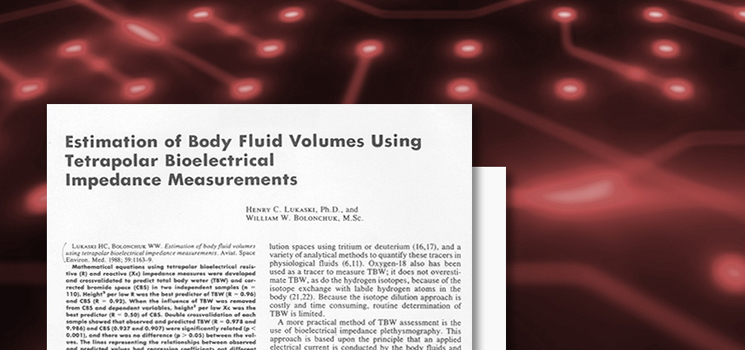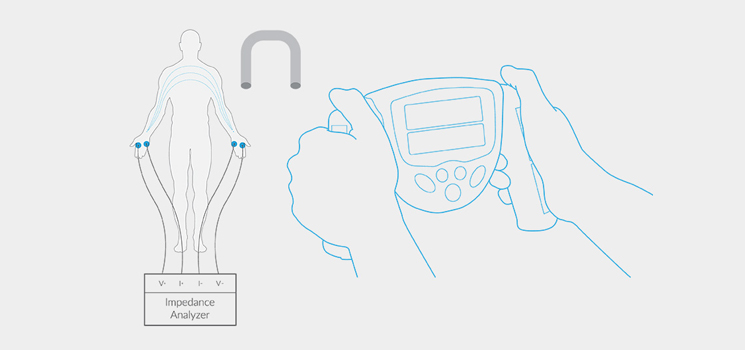메인콘텐츠
인바디 기술
What is BIA?
생체 전기 임피던스 분석법은 인체에 전류를 흘렀을 때 발생하는 임피던스에서 인체를 구성하는 성분을 정량적으로 측정하는 기술입니다. 인바디는 BIA 방법을 활용하여 체성분을 측정합니다. 1960년대 후반 처음 사용된 생체 전기 임피던스 분석법은 인체는 전기가 잘 통하는 수분으로 이루어져있고, 수분량에 따라 전기가 통과하는 정도 즉, 저항이 달라진다는 사실을 원리로 인체에 미세한 교류전류를 흘려 보내 생겨나는 임피던스 인덱스를 얻어 체수분을 측정하는 방법입니다.
1980년대 후반까지 BIA 분석법은 단주파수 전신 임피던스 측정법으로 결과가 부정확하여 측정값을 경험변수를 통해 보정해야 했습니다. 하지만 변수가 추가된 공식들은 해당 집단 외에는 정밀도가 떨어져 범용적인 활용이 어려워져서 병원용, 진단용으로 발전하지 못하고 임피던스 기술 중 하나로 머무르는 수준이었습니다. 이후 당시의 생체전기 임피던스 측정 기술 상 한계를 극복하고, 근본적인 측정 기술이 발전하게 되었고, 다주파수 측정(Multi Frequency), 부위별 임피던스(Segmental impedance) 측정 기술의 개발로 이어지면서 현재 경험변수를 배제한 채 임피던스만으로 정밀하게 인체의 체성분을 분석하게 되었습니다.
Fundamental Principles of BIA
현재 BIA에 의한 체성분 분석 결과는 높은 정밀도와 편의성, 경제성으로 인해 다양한 분야에서 활용되고 있습니다. 하지만, 임상 진단 수단으로써 체성분을 잘 활용하기 위해서는 이를 뒷받침해 주는 측정 기술의 차이를 알고, 이를 꼼꼼하게 따져보는 신중함이 필요합니다.
BIA를 다루는 사람은 생체전기 임피던스 측정법의 원리를 충분히 이해하여 측정 결과에 영향을 미치는 생물학적, 환경적 요인들을 최소화 하도록 해야 합니다. 저항, 리액턴스의 개념과 임피던스 계산 방법을 이해하는 것이 중요합니다.
자세히 보기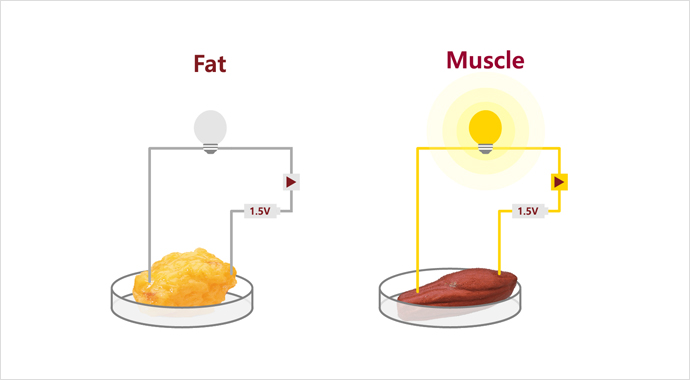
The History of BIA Technology
인바디는 BIA원리로 개발되었습니다. 1960년대 후반 처음 사용 된 생체 전기 임피던스법은 인체는 전기가 잘 통하는 수분으로 이루어져있고, 수분량에 따라 전기가 통과하는 정도, 즉 저항이 달라진다는 사실을 원리로 인체에 미세한 교류 전류를 흘려 보내 생겨나는 임피던스 인덱스를 얻어 체수분을 측정하는 방법이었습니다.
1980년대 후반까지의 BIA법은 단주파수 전신 임피던스 측정법으로 결과가 부정확하여 측정값을 경험변수를 통해 보정해야 했습니다. 하지만 변수가 추가 된 공식들은 해당 집단 외에는 정밀도가 떨어져 범용적인 활용이 어려웠습니다.
- 1969
- Dr.Hoffer and the Impedance Index
- 1979
- RJL Systems and the first impedance meter
- 1992
- Kushner and the Proposal of Multi-frequencies with Segmental Analysis
- 1996
- Dr. Cha creates the InBody Body Composition Analyzer
- 2020
- The World’s first 3MHz high-frequency
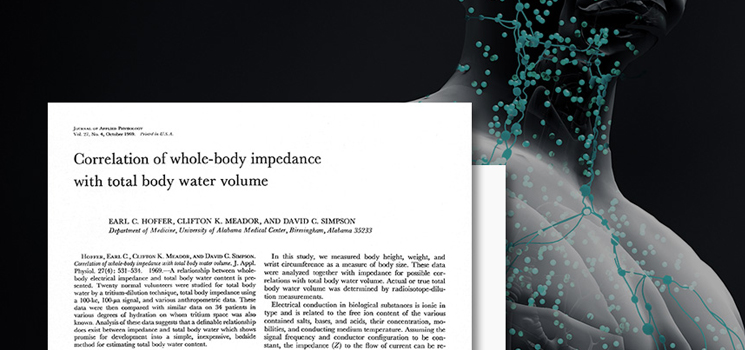
Dr.Hoffer and the Impedance Index
In 1969, Hoffer carried out a series of experiments to prove that total body water and biological impedance were highly correlated, suggesting that impedance measurement could be used for determining total body water. He showed the squared value of height divided by impedance was highly correlated with total body water.
Hoffer took impedance measurements of the right half of the body including the right arm, torso, and right leg. The squared value divided by impedance showed correlation coefficient of 0.92 with total body water, which was higher than other indices including body weight. The equation Hoffer proved is the impedance index used in BIA today.
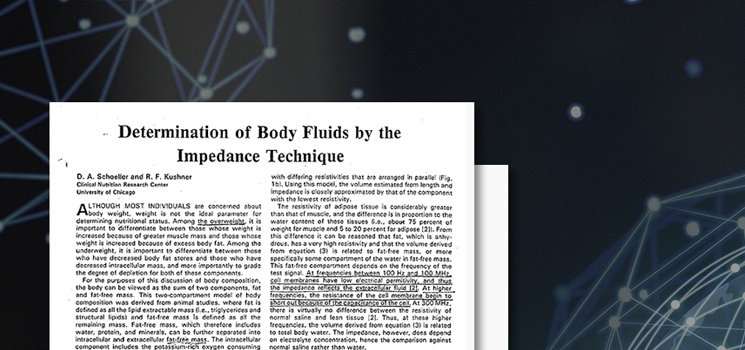
RJL Systems and the first impedance meter
In 1979, RJL Systems commercialized the impedance meter for the first time and the BIA method began to gain popularity. The device measured impedance by attaching electrodes on the back of the right hand and a top of the right foot of a patient and conducting a current of 50kHz through the right half of the body.
Prior to this, body composition could only be measured by caliper or underwater weighing. Such methods needed to be carried out by skilled people and installation was not easy. Also, only specific types of patients could benefit from them. BIA however, was easy, fast, less expensive and less intrusive. Therefore, many body composition researchers, nutritionists, and medical experts began to use BIA.
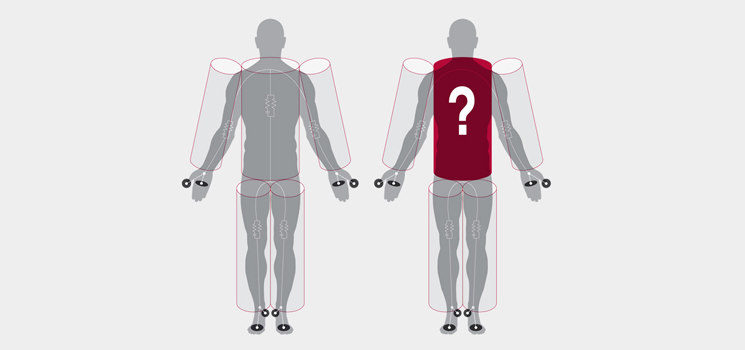
Kushner and the Proposal of Multi-frequencies with Segmental Analysis
Since the inaccuracy of BIA is due to technical limitations, many argued that this could be improved upon. In 1992, Kushner claimed that the human body is made up of five cylinders (right arm, left arm, torso, right leg, left leg) instead of one.
While the thin limbs affect the total impedance, the torso, which has the largest cross-sectional area, has little impact on impedance. However, since the torso makes up 50% of lean body mass, Kushner emphasized that measuring the impedance of the body torso separately would be very important. Measuring the total impedance alone would not be sufficient but all five parts must be measured separately at different frequencies, making a distinction between extracellular water and intracellular water. In other words, the technical limitations of BIA should be overcome by measuring different parts at different frequencies.

Dr. Cha creates the InBody
Body Composition Analyzer
In 1996, Dr. Kichul Cha developed InBody, the world’s first 8-point tactile electrode system with direct segmental analysis to measure impedance in the five different body cylinders using multiple frequencies.
By doing so, the impedance in the limbs and torso were measured separately, yielding highly accurate results without using empirical data based on factors like age, gender, ethnicity, athleticism, and body shape. Thus, the InBody DSM-MFBIA body composition analyzer is a precision medical device. Many BIA products today provide segmental measures of muscle and fat mass, but most of these products are still unable to take segmental impedance measurements, particularly in the torso. The InBody measure each segment separately and shows the impedance values of all five cylinders of the body at each frequency in the Impedance Section of the InBody Result Sheet.
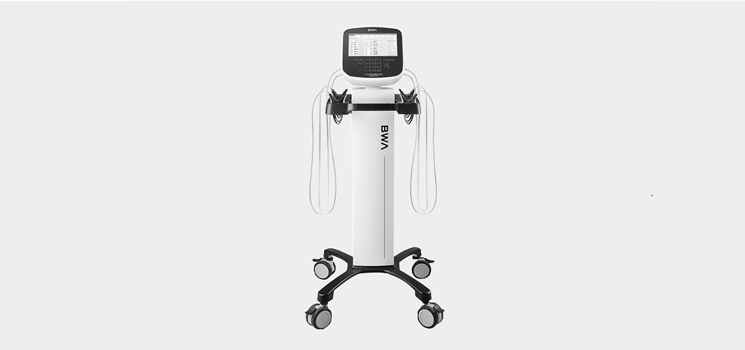
The World’s first 3MHz high-frequency
The higher the frequency, the more difficult it is to control the frequency in the human body which results in an unstable impedance measurement. InBody overcame this limitation and applied the world’s first 3MHz frequency which penetrates through our cell membranes even better, and this enables us to differentiate the Intracellular Water, Extracellular Water which helps us to get a more accurate measurement of the Total Body Water.
The Evolution of BIA through InBody
초기 BIA의 부정확성의 원인은 기술의 한계로 인한 것이었기에 인바디는 그 한계의 해결책은 기술력으로 넘어서야 한다고 생각했습니다. 1996년 차기철 박사는 ‘세계 최초 부위별 직접 임피던스 측정과 다주파수 측정을 함께 구현한 BIA 체성분분석기 InBody’를 개발하여 상용화 하였습니다. 오늘 날 InBody에서 비롯된 높은 정밀도와 사용 편의성으로 BIA 기술의 발전은 전 세계 전문가로부터 널리 인정받고 있으며, InBody는 영양, 스포츠 및 의료 분야에서 매년 발표되는 수백 개의 연구 논문에 언급되고 있습니다. 기존 BIA 기술의 한계점과 인바디의 기술력을 함께 확인해 보시기 바랍니다.
-
BIA Tech Problem : Single Frequency
과거의 BIA 장비는 임피던스를 측정하기 위해 50kHz의 단일 주파수만 사용하였습니다. 그러나 50kHz의 주파수는 세포막을 잘 통과하기 어렵기 때문에 세포 내 수분 함량, 전신의 수분 함량을 정확하게 측정할 수가 없었습니다. 그 결과 수분 밸런스가 무너지고 있는 고령자나 질환자의 체성분 분석이 잘못되는 경우가 발생하였습니다.
InBody Solution : Multiple Frequencies
인바디는 정확한 체수분 측정을 위하여 1kHz에서 3MHz까지의 다양한 저주파와 고주파를 사용하여 세포 내 외 수분을 구분하여 총체수분을 정확하게 측정합니다.
-
BIA Tech Problem : Low reproducibility
BIA측정법은 임피던스로부터 체성분을 해석하는 기술이기 때문에 체성분의 변화를 제대로 비교하기 위해서는 측정 된 임피던스의 높은 재현도가 필수적입니다. 그러나 지금까지의 BIA 장비는 측정할 때마다 전극을 부착하는 방식이라서 접촉하는 위치를 항상 동일하게 할 수 없었기 때문에 매번 임피던스가 다르게 측정되는 문제가 있었습니다.
InBody Solution : 8-Point Tactile Electrode System
인바디는 엄지전극이 있는 8점 접촉 전극 방식을 적용하였습니다. 좌우 손과 발에 각각 전류와 전압전극을 2개씩 배치하여 총 8개의 전극을 쥐거나 밟도록 되어 있습니다. 이 방법은 측정자세가 바뀌거나 여러 번 측정해도 손목과 발목이라는 항상 동일한 지점에서 측정이 시작되어 안정된 결과를 보장합니다.
-
BIA Tech Problem : Human body as one cylinder
전통적인 BIA 장비는 인체를 하나의 원통에 비유하여 전신 임피던스를 측정하고 있었습니다. 그러나 실제 인체는 길이와 단면적이 다른 실린더로 구성되어 있으며, 몸통 임피던스의 1-2옴 차이는 몸통 체수분의 1~2L에 해당되는 큰 차이이기 때문에 이를 따로 측정하지 않으면 전체 체수분 측정에 큰 오류를 발생할 수 있습니다.
InBody Solution : Direct Segmental Measurements
인체의 팔, 다리, 그리고 몸통 임피던스를 5개의 실린더로 간주하여 각각 측정하는 인바디는 서로 다른 모양과 밀도, 단면적을 가지고 있는 신체 부위를 따로 측정하여 체형에 따라 달라지는 임피던스 특성을 분석할 수 있어서 정확한 체성분을 제공하며 더불어 각 부위의 체성분까지도 제공할 수 있습니다.
-
BIA Tech Problem : Empirical estimations
과거 임피던스 측정 기술에서는 전신 임피던스 측정으로 몸통 임피던스는 측정할 수 없었으며, 단일 주파수 사용으로 세포내외수분을 구별하지 못해서 이 비율이 균형적이지 않은 사람의 체수분을 정확하게 구할 수 없었습니다. 이를 보정하기 위해 연령, 성별 등과 같은 경험변수 데이터를 활용하여 일반적인 추세를 바탕으로 신체 구성을 계산하였습니다.
InBody Solution : No Empirical Estimations
체성분을 계산하는데 경험적 추정을 사용하지 않으며, 임피던스를 독립적으로 직접 측정하기 때문에 인바디 결과는 성별, 나이에 관계없이 동일한 신체 성분을 가진 사람이라면 동일한 체성분 결과를 보입니다.
InBody Technology
-
 인체는 부위별로 서로 다른 길이와 단면적을 가지고 있습니다. 팔과 다리는 면적이 좁고 길이가 길어 임피던스 값이 높지만 근육량은 적습니다. 반면 몸통은 상대적으로 면적이 넓어 임피던스 값이 낮고 근육량이 많습니다. 따라서 몸통에서의 작은 임피던스값의 변화는 근육량에 큰 영향을 미치고 반드시 따로 측정해야 정확한 총 근육량을 알 수 있습니다.
인바디는 팔, 다리, 몸통을 따로 측정하여 그 어떤 장비보다 정확한 검사 결과를 제공합니다.
인체는 부위별로 서로 다른 길이와 단면적을 가지고 있습니다. 팔과 다리는 면적이 좁고 길이가 길어 임피던스 값이 높지만 근육량은 적습니다. 반면 몸통은 상대적으로 면적이 넓어 임피던스 값이 낮고 근육량이 많습니다. 따라서 몸통에서의 작은 임피던스값의 변화는 근육량에 큰 영향을 미치고 반드시 따로 측정해야 정확한 총 근육량을 알 수 있습니다.
인바디는 팔, 다리, 몸통을 따로 측정하여 그 어떤 장비보다 정확한 검사 결과를 제공합니다.
-
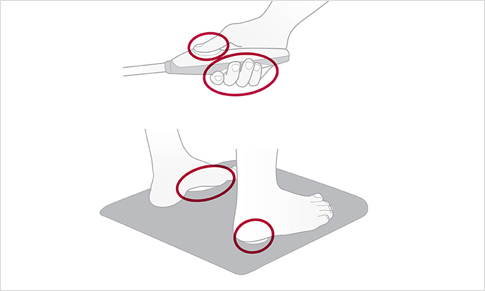 인바디는 인체의 구조적 특성을 이용하여 좌우 손과 발에 각각 전류와 전압전극을 2개씩 배치, 총 8개의 전극으로 구성되어 있습니다. 이러한 전극 설계 기술로 측정 자세가 바뀌거나 여러 번 측정해도 항상 동일한 지점에서 측정이 시작되어 재현성이 매우 높습니다. 또한 전류와 전압을 분리한 인바디의 전극 방식은 피부로부터 발생하는 접촉저항의 영향을 최소화 해 정확한 측정을 가능하게 합니다.
인바디는 인체의 구조적 특성을 이용하여 좌우 손과 발에 각각 전류와 전압전극을 2개씩 배치, 총 8개의 전극으로 구성되어 있습니다. 이러한 전극 설계 기술로 측정 자세가 바뀌거나 여러 번 측정해도 항상 동일한 지점에서 측정이 시작되어 재현성이 매우 높습니다. 또한 전류와 전압을 분리한 인바디의 전극 방식은 피부로부터 발생하는 접촉저항의 영향을 최소화 해 정확한 측정을 가능하게 합니다.
-
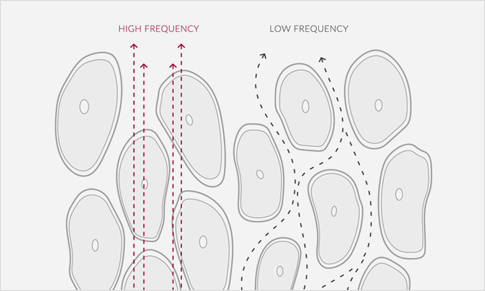 저주파수는 세포막을 통과하지 못해 주로 세포외수분을 반영하고 고주파수는 세포막을 통과하여 세포내수분까지 반영합니다. 인바디는 주파수에 따라 세포막을 통과할 수 있는 정도가 다르다는 점을 활용하여 저주파수부터 고주파수까지 다양하게 사용하고 세포내외수분을 따로 측정합니다. 이를 통해서 총체수분을 정확하게 측정하고 나아가 수분 균형까지 확인할 수 있습니다.
저주파수는 세포막을 통과하지 못해 주로 세포외수분을 반영하고 고주파수는 세포막을 통과하여 세포내수분까지 반영합니다. 인바디는 주파수에 따라 세포막을 통과할 수 있는 정도가 다르다는 점을 활용하여 저주파수부터 고주파수까지 다양하게 사용하고 세포내외수분을 따로 측정합니다. 이를 통해서 총체수분을 정확하게 측정하고 나아가 수분 균형까지 확인할 수 있습니다.
또한, 세계 최초 3MHz 고주파수 측정 기술을 통해 환자, 운동 선수 등 에서의 체수분 결과 정확도를 높였고 측정 자세나 외부 환경에 따른 임피던스 측정 오차를 줄여 체성분 분석에 중요한 50~500kHz 임피던스를 더욱 안정적으로 측정할 수 있습니다(등록특허발명 "제10-1870612호").
-
 리액턴스는 세포막에서 발생하는 저항성분으로 세포 또는 세포막의 건강도와 관련이 있어 체세포량과 세포의 구조적 완성도, 생리적 기능의 수준을 나타냅니다.
인바디는 기존의 50kHz 이외 5kHz, 250kHz 리액턴스 부위별 정밀 측정 기술 향상을 통해 다양한 지표를 제공함으로써 질병의 도래를 예측하거나 영양상태 평가, 운동 효과 반영 등 다양한 임상 분야에서 활용되고 있습니다.
리액턴스는 세포막에서 발생하는 저항성분으로 세포 또는 세포막의 건강도와 관련이 있어 체세포량과 세포의 구조적 완성도, 생리적 기능의 수준을 나타냅니다.
인바디는 기존의 50kHz 이외 5kHz, 250kHz 리액턴스 부위별 정밀 측정 기술 향상을 통해 다양한 지표를 제공함으로써 질병의 도래를 예측하거나 영양상태 평가, 운동 효과 반영 등 다양한 임상 분야에서 활용되고 있습니다.
-
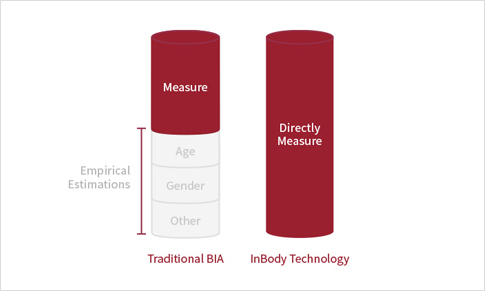 인바디는 성별, 연령과 같은 경험적으로 알려진 정보를 사용하지 않습니다. 과거에는 정확도를 높이기 위해 경험적 정보를 이용하여 결과값을 보정하였지만 측정 집단에 따라 정확도가 떨어지는 문제가 발생했습니다. 인바디는 이러한 한계를 기술력으로 극복한 최초의 장비로 경험변수 없이도 체성분을 정확하게 분석합니다.
인바디는 성별, 연령과 같은 경험적으로 알려진 정보를 사용하지 않습니다. 과거에는 정확도를 높이기 위해 경험적 정보를 이용하여 결과값을 보정하였지만 측정 집단에 따라 정확도가 떨어지는 문제가 발생했습니다. 인바디는 이러한 한계를 기술력으로 극복한 최초의 장비로 경험변수 없이도 체성분을 정확하게 분석합니다.
-
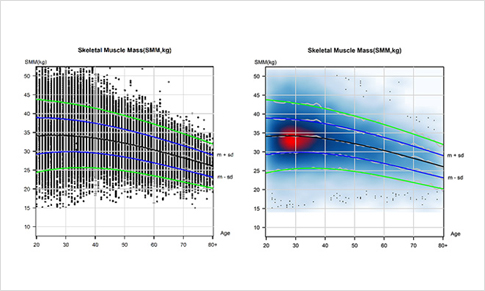 인바디는 전 세계적으로 축적한 인바디 데이터를 토대로 체성분 각 항목에 대한 연령별 그래프를 제공합니다. 측정자의 측정값에 대한 상대적인 위치를 젊은 연령대(T-score) 그리고 같은 연령대(Z-score)의 측정값과 비교하여 표준범위에 대한 평가 이외 종합적인 분석이 가능합니다.
인바디는 전 세계적으로 축적한 인바디 데이터를 토대로 체성분 각 항목에 대한 연령별 그래프를 제공합니다. 측정자의 측정값에 대한 상대적인 위치를 젊은 연령대(T-score) 그리고 같은 연령대(Z-score)의 측정값과 비교하여 표준범위에 대한 평가 이외 종합적인 분석이 가능합니다.



또한, 세계 최초 3MHz 고주파수 측정 기술을 통해 환자, 운동 선수 등 에서의 체수분 결과 정확도를 높였고 측정 자세나 외부 환경에 따른 임피던스 측정 오차를 줄여 체성분 분석에 중요한 50~500kHz 임피던스를 더욱 안정적으로 측정할 수 있습니다(등록특허발명 "제10-1870612호").






